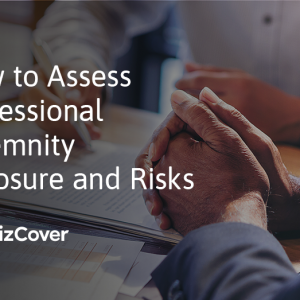Most days are business as usual for your small business. At least you hope they are! Unfortunately, there are days when things go wrong—and some when they go really wrong.
Creating a risk management plan can help you keep your business going if the unexpected happens. Contingency planning helps you set clear instructions for handling a crisis, what everyone’s job is, and how to get back to business as usual ASAP.
Here’s how to prepare your small business for unexpected risks.
1. Identify your risks
Identifying the risks in your business is the first step in creating a risk management plan. After all, you can’t plan for something if you don’t know it could become a problem!
Every business is different, and so are the risks they face. Think about your business and how it runs. What events could disrupt your ability to operate as normal? These may include things like:
- Broken or damaged equipment
- Damaged or stolen stock
- Fires or storm damage
- Increased rebuilding costs caused by inflation
- Claims and lawsuits
- Tax audits
2. Assess your risks
Now that you have a list of risks in your business think about how you’d be impacted if they happened. Consider the following for each risk:
- How severely would this risk impact my ability to work?
- How much would it cost me to fix this issue? Is it a financial risk?
- How likely is it that this risk could happen?
3. Minimise or eliminate risks
Some risks may be simple to avoid or at least decrease the chances of them happening, like removing tripping hazards from walkways to prevent trip and fall accidents.
But others may take more work. For example, you may need to put a system of checks in place to ensure that mistakes are picked up and corrected before the work reaches your clients.
However, putting in the time and effort to minimise your risks may be well worth it, especially if it helps you avoid expensive lawsuits.
4. Check your insurance
Speaking of minimising risks in your business, business insurance may be a good way to manage your financial risks.
If something goes wrong and you’re not insured, the cost of setting things right would fall squarely on your shoulders. But with insurance, many unexpected expenses could be covered, like:
- Building repairs
- Replacing damaged or stolen stock
- Repairing or replacing damaged equipment
- Legal defence fees
- Compensation payments
- Professional fees to handle investigations or tax audits
The expenses your business insurance covers will depend on the types of policies you choose. Some cover is mandatory for certain occupations or industries, while others might be “nice to haves”. When you identify and assess the risks in your business, you can start to understand the types of insurance you may need or want.
5. Plan for emergencies
You’ve identified your risks and are taking steps to avoid them—great! However, things may still go sideways despite your best efforts.
This is where contingency planning comes in. Having a plan for how to handle incidents could help you manage them better and get back to work sooner.
Consider how you will need to respond if a major incident occurs in your business, such as a customer injury, breach of contract, or storm damage to your building. Collect the relevant contact details (i.e., landlord, insurance company, staff) and have them ready should they be needed.
Also, think about who will be responsible for what in the event of a crisis. Having clear instructions on who does what after an incident could help you recover faster.
6. Train your staff
If you have employees, get them involved in your risk management efforts. Encourage them to report risks they’ve identified so they can be addressed. Consider regular training on how to handle risks and respond in a crisis.
7. Monitor for new risks
Creating a risk management plan is an ongoing process for most businesses. New risks could pop up every day, so it’s important to know how to identify and assess them.
As your business grows and changes, keep an eye out for new or growing risks. You may need to rework your risk management plan, adjust your business insurance, or retrain your staff regularly (i.e., quarterly or yearly).
Get covered with BizCover
Business insurance can be a great way to manage the risks in your business. And with BizCover, protecting your small business is a no-dramas experience!
Compare multiple quotes from selected leading Australian insurers for essential products like Public Liability, Professional Indemnity and Business Insurance. Find competitive prices to fit your budget and save in about 10 minutes. It’s even easy to adjust your cover online as your business changes.
Get your free quotes now and see how much you can save with BizCover!


